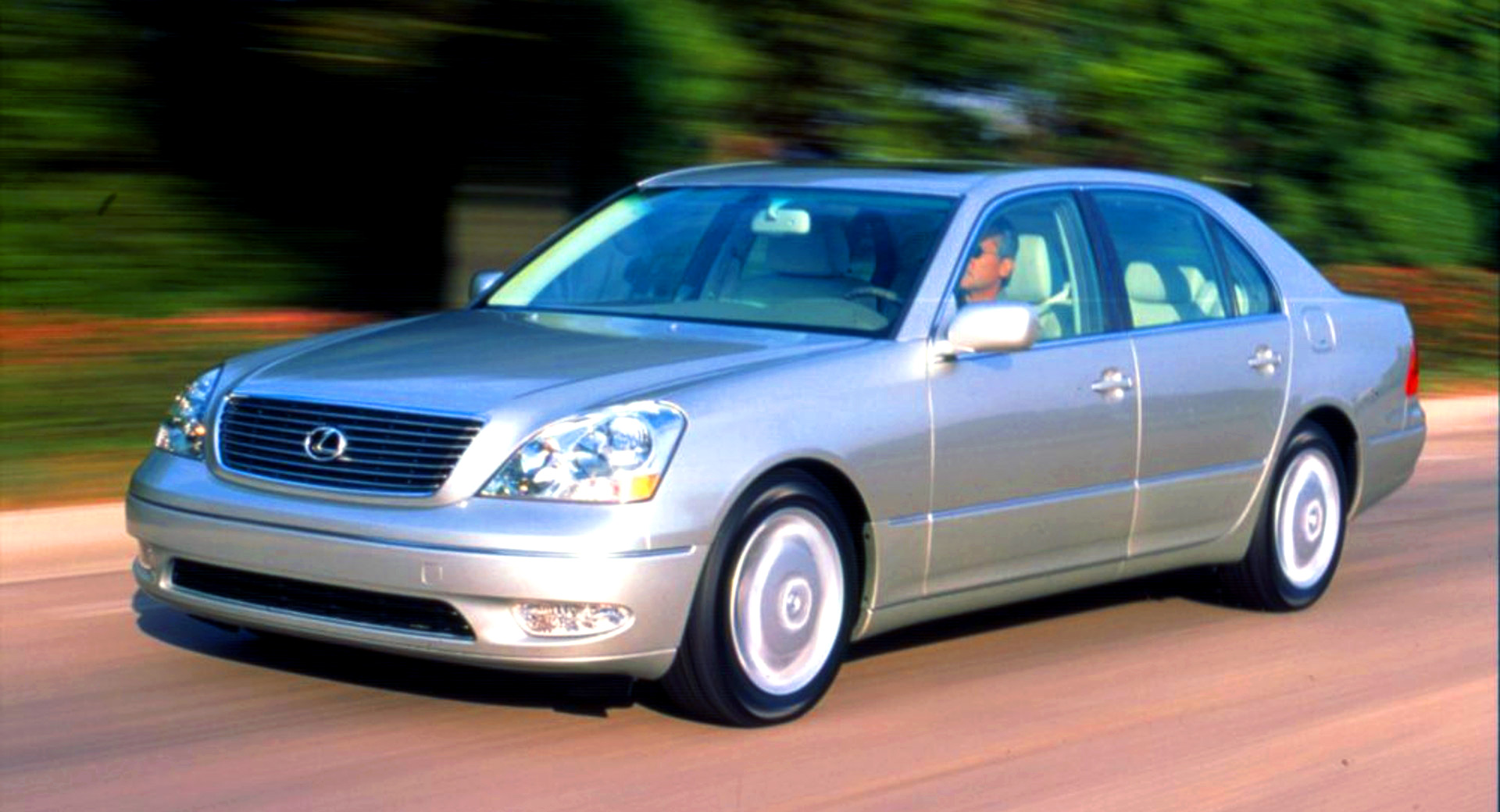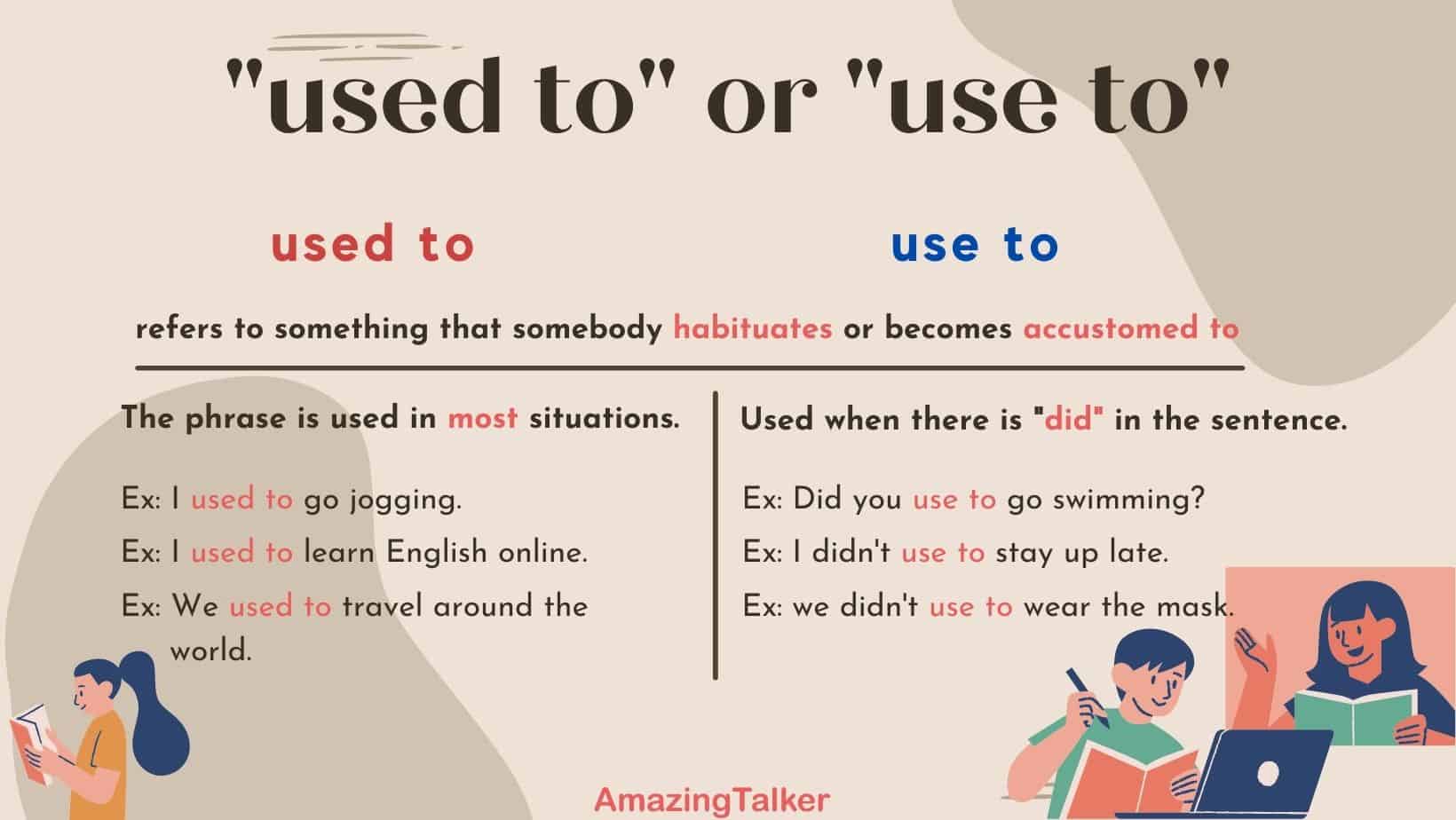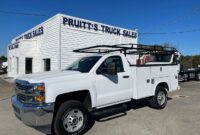Used 3500 Dodge Trucks For Sale: Your Comprehensive Buying Guide sale.truckstrend.com
When the call for serious muscle and unwavering capability echoes, few vehicles answer with the authority of a 3500 series truck. For decades, the Dodge (and later, Ram) 3500 has stood as a titan in the heavy-duty segment, renowned for its immense towing and hauling capacities, particularly when powered by the legendary Cummins diesel engine. For many, investing in a brand-new heavy-duty truck isn’t financially viable, making the used market an incredibly attractive arena. A used 3500 Dodge truck offers a potent blend of rugged durability, proven performance, and significant cost savings, making it an ideal choice for contractors, farmers, RV enthusiasts, or anyone who demands uncompromising utility from their vehicle.
This comprehensive guide is designed to navigate the complexities of purchasing a used 3500 Dodge truck. We’ll delve into why these trucks are a smart investment, what to look for across different generations, essential inspection points, the buying process, and critical ownership considerations. By the end, you’ll be equipped with the knowledge to make an informed decision and confidently drive away in a heavy-duty workhorse that meets your needs and budget.
Used 3500 Dodge Trucks For Sale: Your Comprehensive Buying Guide
Why Choose a Used Dodge 3500?
Opting for a used 3500 Dodge truck presents a compelling array of advantages that extend far beyond initial cost savings:
- Significant Cost Savings: The most obvious benefit is the depreciation advantage. New trucks lose a substantial portion of their value in the first few years. Buying used means you let the first owner absorb that initial depreciation, getting a more capable truck for less money.
- Proven Reliability and Durability: Especially models equipped with the Cummins Turbo Diesel engine, these trucks are built to last hundreds of thousands of miles. Their heavy-duty components are designed for rigorous work, offering a long service life if properly maintained.
- Exceptional Towing and Hauling Capacity: A 3500 is engineered for the toughest jobs. With high Gross Vehicle Weight Ratings (GVWR) and Gross Combined Weight Ratings (GCWR), these trucks can confidently tow large fifth-wheel RVs, gooseneck trailers, and heavy equipment, often far exceeding the capabilities of lighter-duty trucks.
- Versatility for Work and Recreation: Whether you’re hauling construction materials, pulling a horse trailer, or embarking on an overland adventure, the 3500’s robust platform adapts to a wide range of applications.
- Strong Resale Value: Due to their reputation for durability and capability, particularly diesel models, used 3500s tend to hold their value well compared to other vehicles, making them a sound long-term investment.

Key Generations and What to Look For
Over its history, the 3500 series has evolved significantly. Understanding the characteristics and common quirks of each generation can help narrow your search:
-
Second Generation (1994-2002 Dodge Ram 3500):
- Engines: Famous for the 12-valve (pre-1998.5) and 24-valve (post-1998.5) Cummins diesel. The 12-valve is mechanically simple and highly sought after by enthusiasts. The 24-valve introduced more power and electronic controls. The 5.9L Magnum V8 and 8.0L V10 gasoline engines were also available.
- Common Issues: Rust (especially on body panels and frame), steering linkage wear, automatic transmission longevity (47RE/48RE can be weak points, especially if abused), VP44 injection pump issues on early 24-valve Cummins.
- What to Look For: Well-maintained Cummins engines are kings here. Check for rust extensively. Manual transmissions are generally more robust.
-
Third Generation (2003-2009 Dodge Ram 3500):
- Engines: Primarily the 5.9L Cummins (until mid-2007) and later the 6.7L Cummins (with DPF and EGR). Gasoline options included the 5.7L Hemi V8.
- Common Issues: Front-end components (ball joints, tie rods), exhaust manifold cracks (especially on Cummins), turbo issues (on 6.7L), rust on rocker panels and fenders. Early 6.7L Cummins models can have DPF/EGR related issues due to emissions systems.
- What to Look For: Check for proper DPF/EGR function if considering a 6.7L. The 5.9L Cummins from this era is highly regarded for its simplicity and power.
-
Fourth Generation (2010-2018 Ram 3500 – No longer "Dodge"):
- Engines: Exclusively the 6.7L Cummins Turbo Diesel and 5.7L Hemi V8 (later 6.4L Hemi).
- Common Issues: Emissions system components (DPF, EGR, DEF on 2013+ models), Uconnect system glitches, exhaust brake issues. Generally more reliable than previous generations but also more complex.
- What to Look For: Service history is paramount for emissions-equipped diesels. Pay attention to fluid leaks and overall electronic functionality.
-
Fifth Generation (2019-Present Ram 3500):
- Engines: Revised 6.7L Cummins (Standard Output and High Output) and 6.4L Hemi V8.
- Notes: These are newer and thus generally more expensive in the used market. They offer significant advancements in interior comfort, technology, and towing capacity. Used models will slowly become more available.
Engine Choices: The Cummins Turbo Diesel is the powerhouse, offering unmatched longevity, torque, and fuel efficiency for heavy-duty work. The Hemi V8 gasoline engines are viable for less frequent heavy towing, offer lower upfront costs, and simpler maintenance, but will consume more fuel under load.
Transmission Choices: Both manual and automatic transmissions were offered. Manuals (e.g., NV4500, NV5600, G56) are robust but can be harder to find. Automatics have improved significantly over generations; ensure smooth shifting and proper fluid levels.
Drivetrain: 2WD models are fine for pavement work and maximum payload, while 4WD is essential for off-road, snow, or muddy conditions, though it adds complexity and weight.
Cab Configurations & Bed Lengths: Regular Cab (single row), Quad Cab (extended), and Crew Cab (full rear doors) offer varying passenger space. Bed lengths are typically 6.4 ft (short) or 8 ft (long), with the long bed being more common for 3500s due to its utility.
What to Inspect Before Buying
A thorough inspection is non-negotiable when buying a used 3500. Don’t rely solely on online photos.
- Exterior and Frame: Look for rust, especially on the frame rails, body mounts, rocker panels, and wheel wells. Check for signs of previous accidents (uneven panel gaps, mismatched paint). Inspect the bed for dents, scrapes, and damage from heavy use.
- Engine:
- Diesel (Cummins): Look for oil or coolant leaks. Listen for unusual noises (knocking, rattling, excessive turbo whine). Check for excessive blue (oil) or black (fuel) smoke from the exhaust. Ask for cold start demonstrations.
- Gas (Hemi): Check for oil leaks, listen for ticking (Hemi tick can be normal, but excessive can indicate issues), and signs of overheating.
- Review maintenance records for consistent oil changes and filter replacements.
- Transmission and Drivetrain:
- Automatic: Check fluid color (should be red, not brown or black) and smell (shouldn’t smell burnt). During a test drive, ensure smooth, timely shifts without slipping or harshness.
- Manual: Check clutch engagement (shouldn’t slip) and smooth gear changes.
- Engage 4WD (if equipped) to ensure it works properly, both high and low range. Check for excessive play in drive shafts and U-joints.
- Suspension and Steering: Look for worn ball joints, tie rod ends, and control arm bushings (common wear items). Check shocks for leaks. Listen for clunks or squeaks over bumps. Test for excessive play in the steering wheel.
- Brakes: Check pad thickness and rotor condition. Test for firm pedal feel and no pulling to one side.
- Interior: Test all electronics (windows, locks, radio, HVAC). Check for warning lights on the dashboard. Inspect upholstery for rips and tears. Note any unusual odors (mildew, smoke).
- Tires: Check tread depth and ensure even wear. Mismatched or severely worn tires can indicate alignment issues or neglect.
The Buying Process: A Step-by-Step Guide
Purchasing a used 3500 requires a methodical approach to ensure you get a reliable vehicle.
- Define Your Needs and Budget: What will you primarily use the truck for? How much weight will you tow or haul? This dictates the engine, drivetrain, and cab configuration you need. Set a realistic budget, including potential immediate repairs or maintenance.
- Research and Set a Price Range: Use online marketplaces (Autotrader, Cars.com, Facebook Marketplace, Craigslist), dealership websites, and truck-specific forums to get a sense of market prices for different years, mileages, and conditions.
- Where to Look:
- Dealerships: Offer financing, warranties (sometimes), and often reconditioned vehicles. Prices may be higher.
- Private Sellers: Often offer lower prices but "as-is" sales. More negotiation room.
- Online Marketplaces: A mix of both, requiring careful vetting.
- Obtain a Vehicle History Report (VHR): Services like CARFAX or AutoCheck can reveal accidents, flood damage, salvage titles, odometer discrepancies, and service history. This is a crucial step.
- Pre-Purchase Inspection (PPI): This is the single most important step. Have an independent, qualified mechanic (ideally one familiar with heavy-duty trucks and diesel engines) inspect the truck. They can identify hidden problems that you might miss, potentially saving you thousands in future repairs.
- Test Drive: Drive the truck on various road types (city, highway, bumps) and speeds. Pay attention to how it accelerates, brakes, steers, and shifts. Listen for unusual noises.
- Negotiation: Armed with your inspection findings and market research, negotiate the price. Be prepared to walk away if the deal isn’t right or if the seller is unwilling to address concerns.
- Paperwork and Title Transfer: Ensure all documentation is correct: bill of sale, title (clear, no liens), odometer disclosure statement. Understand your state’s requirements for title transfer and registration.
Ownership Costs and Maintenance Considerations
Owning a heavy-duty truck comes with specific costs beyond the purchase price:
- Fuel Economy: Diesel trucks, while more efficient than gas under load, still consume a significant amount of fuel. Gas engines will have lower MPG.
- Insurance: Heavy-duty trucks often have higher insurance premiums.
- Routine Maintenance: Oil changes (especially for diesel, which uses more oil), fuel filters, air filters, and tire rotations are critical. Diesel engines require specific fuel filters and often more frequent oil changes.
- Potential Repairs: Be prepared for common wear items like brakes, tires, suspension components, and front-end parts. Diesel emissions systems (DPF, EGR, DEF) on newer models can be costly to repair if they fail.
- Parts Cost: Parts for heavy-duty trucks can be more expensive than for lighter vehicles.
Budgeting for these ongoing costs is essential to ensure your used 3500 remains a reliable asset.
Estimated Price Guide for Used 3500 Dodge Trucks
Please note that these are estimated price ranges for used 3500 Dodge/Ram trucks in good, runnable condition. Actual prices vary significantly based on mileage, exact trim, condition, maintenance history, region, demand, and specific features (e.g., dually vs. single rear wheel, specific engine output).
| Year Range | Engine Type | Drivetrain | Cab Type/Bed Length | Estimated Price Range (USD) | Notes |
|---|---|---|---|---|---|
| 1994-2002 | 5.9L Cummins (12V/24V) | 2WD/4WD | Regular/Quad, 8ft | $8,000 – $20,000 | Older, classic models. Condition varies wildly. 12V often commands premium. |
| 5.9L V8 / 8.0L V10 | 2WD/4WD | Regular/Quad, 8ft | $5,000 – $12,000 | Gas options generally cheaper, less demand for heavy towing. | |
| 2003-2009 | 5.9L Cummins | 2WD/4WD | Regular/Quad/Mega, 8ft | $15,000 – $30,000 | Highly sought after for pre-emissions diesel. Prices higher for clean 5.9L. |
| 6.7L Cummins | 2WD/4WD | Regular/Quad/Mega, 8ft | $13,000 – $28,000 | Early emissions models. Prices can be lower due to DPF/EGR concerns. | |
| 5.7L Hemi | 2WD/4WD | Regular/Quad/Mega, 8ft | $8,000 – $18,000 | Good value for lighter duty or occasional towing. | |
| 2010-2018 | 6.7L Cummins | 2WD/4WD | Regular/Crew/Mega, 8ft | $25,000 – $55,000+ | Strong demand. Higher prices for low mileage, well-equipped Laramie/Longhorn trims. |
| 5.7L/6.4L Hemi | 2WD/4WD | Regular/Crew/Mega, 8ft | $15,000 – $35,000 | More affordable entry point into 4th Gen. | |
| 2019-Present | 6.7L Cummins | 2WD/4WD | Crew/Mega, 8ft | $45,000 – $80,000+ | Newer models. High prices reflect modern features and lower depreciation. Limited used availability. |
Frequently Asked Questions (FAQ)
Q1: Is a used Dodge 3500 reliable?
A: Yes, generally. While specific reliability depends on the year, engine, and prior maintenance, the 3500 series, especially with the Cummins diesel, is known for its durability and longevity. Regular maintenance is key to maximizing its lifespan.
Q2: What’s the best engine for a used Dodge 3500?
A: For heavy towing, longevity, and strong resale value, the Cummins Turbo Diesel (available in 5.9L and 6.7L variants) is generally considered the best. The 5.9L Cummins (pre-2007.5) is often favored for its simpler design and lack of complex emissions equipment. The Hemi gasoline engines are good for lighter use and lower upfront costs.
Q3: What mileage is too high for a used 3500?
A: For a Cummins diesel, 200,000 to 300,000 miles is not uncommon if properly maintained. Some even exceed 500,000 miles. For gasoline engines, higher mileage means more wear, typically making 150,000-200,000 miles a significant benchmark. Service history is more important than just mileage.
Q4: Should I buy a used 3500 from a dealer or a private seller?
A: Dealers often offer reconditioned vehicles, potential warranties, and financing options, but usually at a higher price. Private sellers typically have lower prices but sell "as-is," meaning you bear all risk. Always get a Pre-Purchase Inspection regardless of the seller.
Q5: What are common issues to watch for in a used 3500?
A: Common issues vary by generation but include rust (especially older models), front-end suspension components (ball joints, tie rods), automatic transmission issues (older models), and for newer diesels, problems with emissions systems like the DPF (Diesel Particulate Filter) and EGR (Exhaust Gas Recirculation) valves.
Q6: How much can a used Dodge 3500 tow?
A: Towing capacity varies significantly by year, engine, transmission, and specific configuration (e.g., 2WD vs. 4WD, single vs. dual rear wheels). However, 3500 series trucks are designed for heavy loads, with capacities ranging from around 10,000 lbs for older gas models to over 30,000 lbs for newer Cummins diesel dually configurations. Always check the specific truck’s door jamb sticker and owner’s manual for precise ratings.
Conclusion
A used 3500 Dodge (or Ram) truck represents an exceptional value proposition for anyone needing serious hauling and towing capability without the new truck price tag. While the search requires diligence and a keen eye for detail, the rewards are substantial: a powerful, durable, and versatile workhorse that can tackle virtually any task you throw at it.
By thoroughly researching different generations, conducting comprehensive inspections, understanding the buying process, and accounting for ownership costs, you can confidently navigate the used truck market. Remember, patience and a pre-purchase inspection by a trusted mechanic are your best allies. With the right approach, your used 3500 Dodge truck won’t just be a purchase; it will be a long-term investment in reliability and power.



